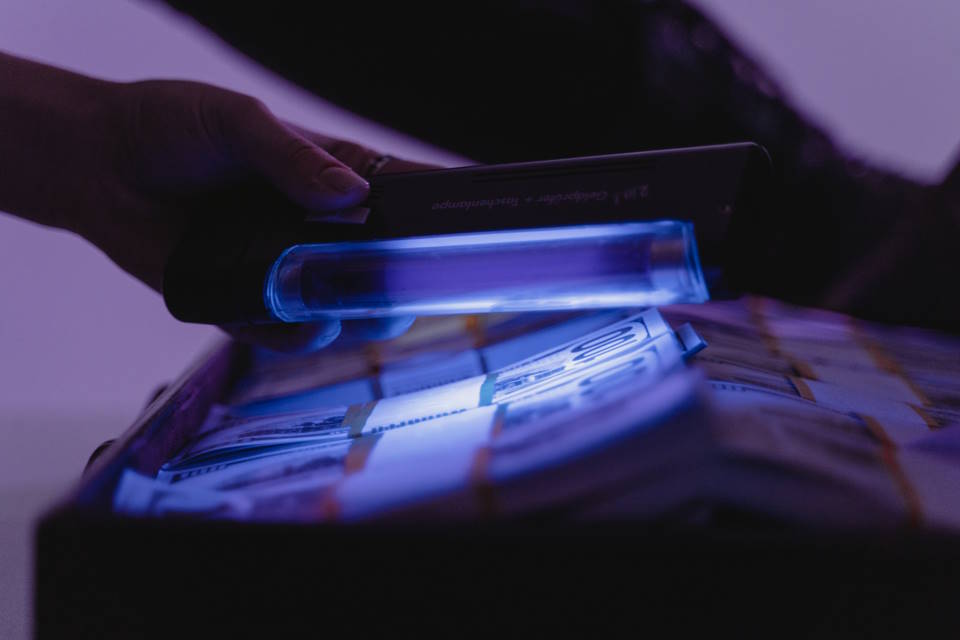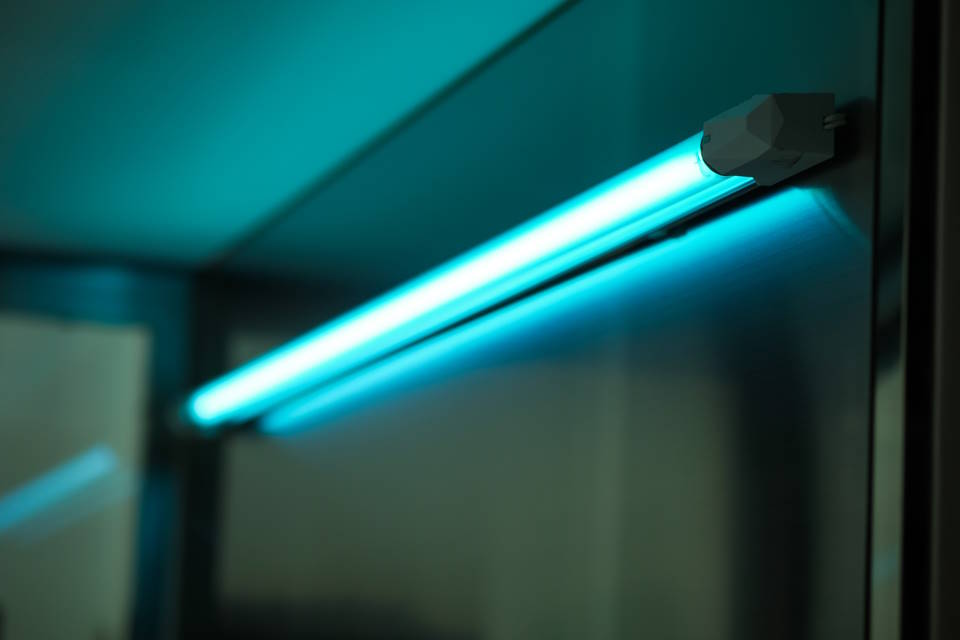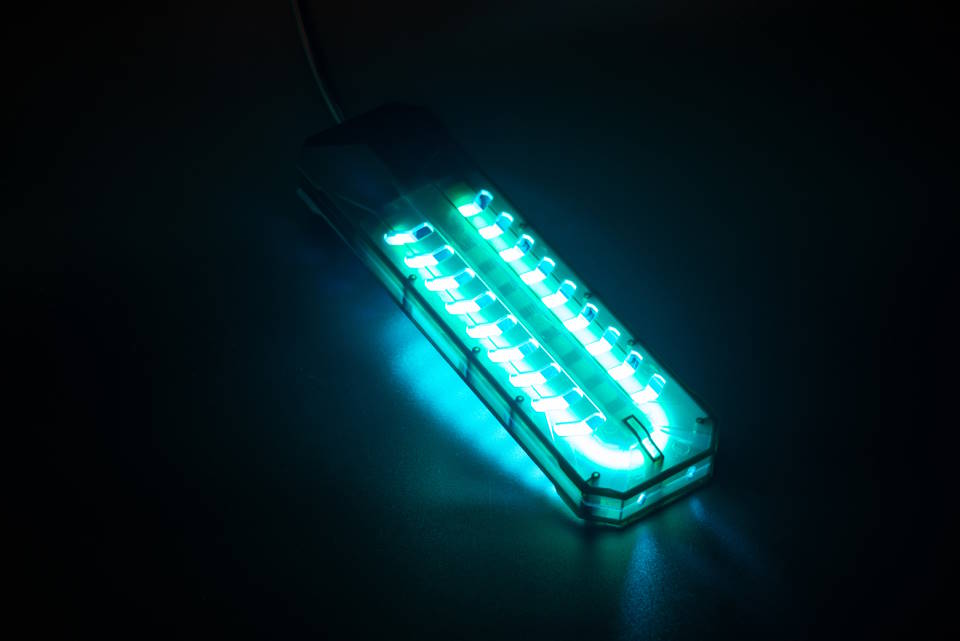As homeowners, we all know how frustrating it can be to deal with mold problems in our homes. Not only does mold pose health risks, but it can also weaken the structure of our homes and cause unpleasant odors. While there are many ways to tackle mold problems, some people may wonder if UV light can help. We’ll explore the question of whether UV light can kill mold, how long it takes, and how much UV light is needed. We’ll also look at alternative, natural ways to combat mold growth in your home.
Introduction

Ultraviolet light is a natural disinfectant that has been known to kill bacteria and viruses. But the question still remains, does UV light kill mold? The answer is yes, it does.
Mold is a type of fungus that grows in damp, humid areas. It is usually found in bathrooms, kitchens, and basements. Mold can cause health problems such as allergies, headaches, and respiratory issues. It is important to get rid of mold as soon as possible to prevent it from spreading.
UV light is effective in killing mold spores because it damages the DNA of the mold and prevents it from reproducing. However, the effectiveness of UV light depends on factors such as the intensity, duration, and distance of the light source.
- Intensity: The intensity of UV light is measured in wavelengths. The shorter the wavelength, the greater the intensity. A UV light with a wavelength of 254 nm is most effective in killing mold spores.
- Duration: The longer the exposure time, the more effective UV light is in killing mold. Exposure times of 30 minutes or more are recommended for maximum effectiveness.
- Distance: The closer the UV light is to the mold, the more effective it is in killing it. It is important to place the UV light as close to the mold as possible.
It is important to note that UV light is not effective in killing mold on porous surfaces such as drywall or fabric. The light cannot penetrate the surface to kill the mold spores. Non-porous surfaces such as tile and metal are more effective in preventing the growth of mold.
How Long Does It Take for a UV Light to Kill Mold?

Ultraviolet (UV) light can be used as a method to kill mold, but the effectiveness and time it takes can depend on various factors. One of the most important factors is the type of mold that is present. Some molds are more susceptible to UV light than others, and may require different lengths of exposure to be completely eradicated.
- Generally, for UV light to effectively kill mold, the exposure time should be at least several minutes. This may depend on the intensity of the UV light, as well as the distance between the light and the mold.
- It’s also important to note that UV light can only work on surfaces that it directly touches. This means that if there is any mold hidden behind walls or other surfaces, UV light will not be able to reach it and therefore will not be effective.
- Additionally, it’s important to properly clean and remove any visible mold before using UV light. UV light may be effective at killing mold spores, but it will not remove any dead mold or mold stains.
How Much UV Light Does It Take To Kill Mold?

If you’re looking for ways to kill mold, UV light might be one of the solutions you’re considering. But the question is, how much UV light does it take to kill mold? Well, the answer is not quite straightforward as there are various factors that affect the effectiveness of UV light in killing mold.
First of all, the intensity of UV light matters. The stronger the UV light, the more effective it is in killing mold. Typically, UV lights used for mold remediation have an intensity of 18-60 watts per bulb. The distance between the UV light and the mold-infested area also affects its effectiveness. If the distance is too far, the UV light may not be able to kill all the mold spores.
- Another factor to consider is the exposure time. The longer the mold is exposed to UV light, the more likely it is to be killed. However, it’s important to note that some types of mold are more resistant to UV light than others. Some studies have shown that certain types of mold can survive up to 16 hours of exposure to UV light.
- Lastly, the amount of mold present matters. If the mold infestation is severe, a higher intensity UV light would be necessary to kill all the mold spores.
It’s also important to remember that UV light is not a standalone solution to mold infestation. While it may help eliminate some of the mold, it doesn’t address the underlying cause of the problem. Mold thrives in moisture, so it’s crucial to identify and fix the source of moisture to prevent future mold growth.
| Type of Mold | Exposure Time to UV Light |
|---|---|
| Aspergillus niger | 2-6 hours |
| Penicillium chrysogenum | 3-12 hours |
| Stachybotrys chartarum | 16 hours |
Will Any UV Light Kill Mold?

Mold is one of the common household problems that every homeowner faces. Not only does it look unpleasant, but its presence also poses health risks. There are different ways to get rid of mold, but using ultraviolet (UV) light has become a popular method. One who has thought of using UV light to get rid of mold might be wondering, “Will any UV light kill mold?” Let’s look at some facts.
Firstly, it’s important to know that UV light is a type of electromagnetic radiation that falls outside the visible light spectrum. It has different levels, and the one that can kill mold is UV-C. It has a short wavelength and high energy that can penetrate the mold’s cell wall and disrupt its DNA, thus killing it.
Secondly, any UV light can kill mold, but it depends on how close the mold is to the UV light source. UV-C light is known to have a range of about 6-8 inches. If the mold is out of this range, then it won’t be affected. Thus, the effectiveness of the UV light in killing mold depends on the light’s distance from the mold. One needs to ensure that the UV light is pointing at the mold for a continuous period to be effective.
| Types of UV lighting | Wavelength |
|---|---|
| UV-A | 315-400 nm |
| UV-B | 280-315 nm |
| UV-C | 100-280 nm |
Lastly, one might wonder if any UV light will work to kill mold. UV lights come in different types and wavelengths. As mentioned earlier, it’s only UV-C light that can kill mold. One needs to purchase a UV-C light to eliminate mold effectively. Also, it’s important to understand that while UV-C light can kill mold, it won’t remove the dead mold spores. One still needs to clean the area after using UV-C light to get rid of the dead spores.
What Color Is Mold Under UV Light?

Mold can grow in various colors, while some can be transparent, some can be black, green, yellow, or gray. These colors may give you an idea about the type of mold present in your home, but they are not always accurate. The actual color of mold can be pretty different when exposed to UV light.
So, what color is mold under UV light? It’s a bit tricky to answer as different types of mold produce different colors under UV light. For instance, black mold usually appears in shades of green, yellow, or pink, while green mold may turn pink or red when exposed to UV light.
One thing for sure, UV light can help identify mold and make it much easier to spot. There are various devices and kits available in the market that use UV light to detect and highlight mold spores’ presence. You can use these kits to identify the mold location and then apply the appropriate remediation method.
| Type of Mold | Color Under UV Light |
|---|---|
| Alternaria | Orange |
| Aspergillus | Yellow/Green |
| Cladosporium | Green/Blue |
| Penicillium | Blue/Green |
| Stachybotrys | Greenish-Black |
| Ulocladium | Greenish-Black |
Though UV light won’t necessarily kill mold, it can help locate the exact area of contamination so that it can be cleaned up correctly. And once you have identified the type of mold present in your home, you can choose an appropriate remediation process.
Can You Kill Black Mold With UV Light?

Black mold is one of the most dangerous types of mold that can grow inside your home. It can cause serious health problems, such as respiratory issues, allergies, and even organ damage. That’s why it’s important to eliminate black mold as soon as you notice it. One method that’s often recommended for mold removal is UV light.
UV light is a type of radiation that’s known for its ability to kill bacteria and viruses. But, can it also kill black mold? The answer is yes, UV light can be effective at killing black mold.
However, it’s important to note that not all types of UV light are effective at killing mold. Specifically, you’ll need a type of UV light that’s known as ‘UVC’. This type of UV light has the shortest wavelength and is the most effective at killing mold spores.
How does UV light kill black mold?
When UV light comes into contact with black mold, it damages the mold’s DNA structure. This makes it impossible for the mold to reproduce and eventually leads to the death of the mold spores.
It’s important to note that while UV light can be effective at killing black mold, it should not be your only method of mold removal. You’ll still need to physically remove any visible mold and thoroughly clean the affected area to prevent the mold from returning.
| Pros of using UV light to kill black mold: | Cons of using UV light to kill black mold: |
|---|---|
| • UV light is chemical-free and safe for use around pets and children | • UV light must be directed at the mold spores for an extended period of time, which can be time-consuming |
| • UV light can reach areas that are difficult to access, such as inside walls and ceilings | • UV light can only kill mold that it comes into direct contact with |
What Kills Mold Naturally?

Mold is one of the most common issues people face in their homes or commercial spaces. It is unsightly and can pose a risk to one’s health if not handled properly. There are many ways to tackle mold, but some methods involve the use of harsh chemicals that can be harmful to both you and the environment. If you are looking for an alternative to chemical treatments, consider these natural remedies that can help kill mold.
Vinegar: Vinegar is a great all-purpose cleaner, and it is also effective in killing mold. The acetic acid in vinegar is antimicrobial and can kill up to 82% of mold species. To use vinegar, mix equal parts of white vinegar and water in a spray bottle and spray the affected area. Let it sit for an hour, then scrub the area with a brush and rinse with water.
Baking soda: Baking soda is another versatile household item that can help kill mold. It works by absorbing moisture, which helps to prevent mold growth. To use baking soda, mix a quarter tablespoon of baking soda with water to create a paste and apply it to the affected area. Let it sit for 10 minutes before scrubbing with a brush and rinsing with water.
Tea tree oil: Tea tree oil is a natural antifungal and antibacterial agent that can help kill mold. To use tea tree oil, mix a teaspoon of tea tree oil with a cup of water in a spray bottle and spray the affected area. Let it sit for a few hours before wiping with a cloth and rinsing with water.
- While these natural remedies can be effective in killing mold, they are best suited for small areas of mold growth. If your mold problem is extensive or if you have a mold allergy, it is best to call in a professional to handle the issue.

| Pros | Cons |
|---|---|
| These natural remedies are safer for you and the environment | May not be as effective as chemical treatments |
| Can be used in combination with other treatments for best results | May be more time-consuming than other methods |
Overall, using natural remedies to kill mold is a safe and effective way to address this common problem. By leveraging the benefits of vinegar, baking soda, and tea tree oil, you can help protect your home or business from the harmful effects of mold while also doing your part to protect the health of the planet.

